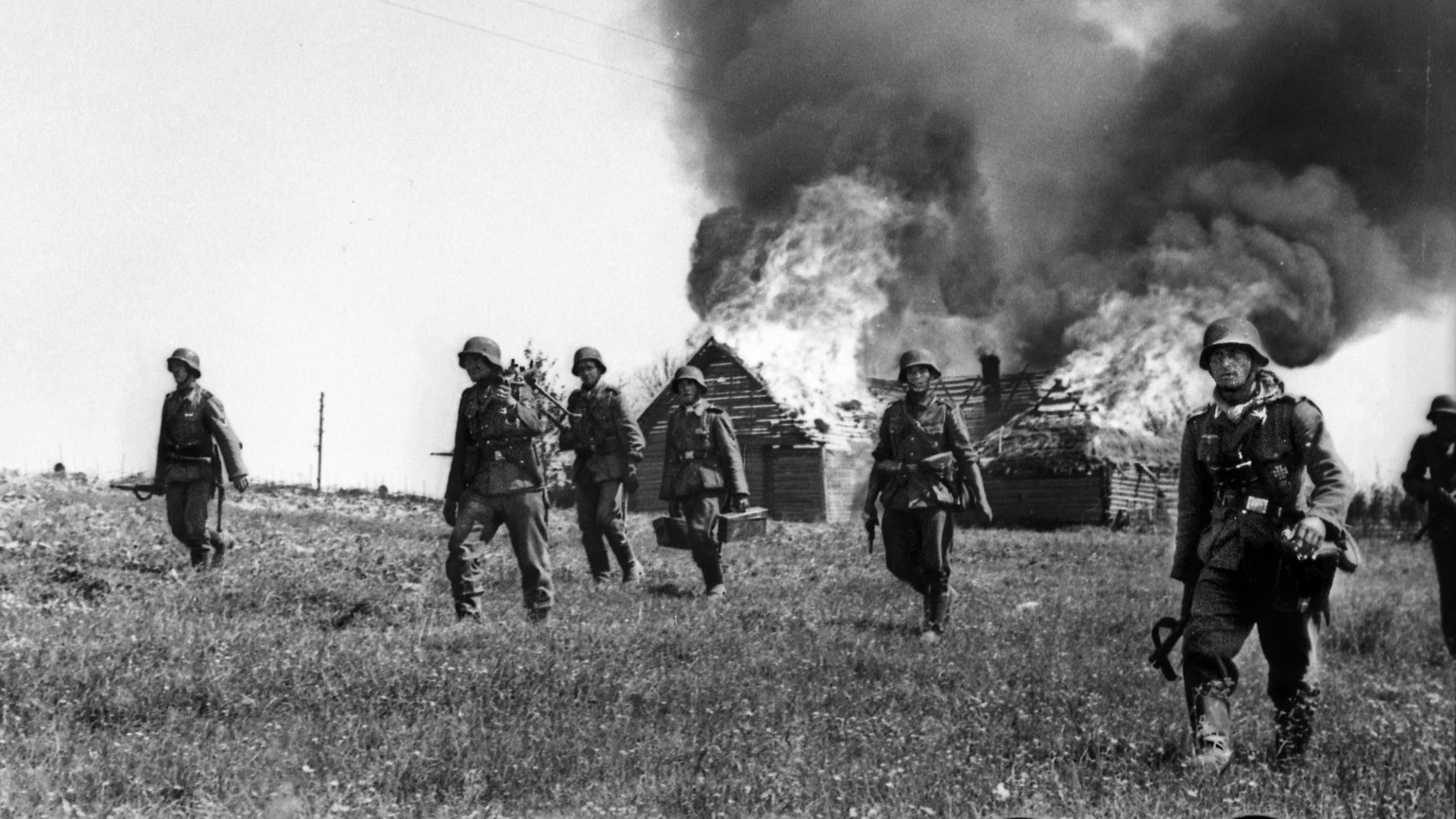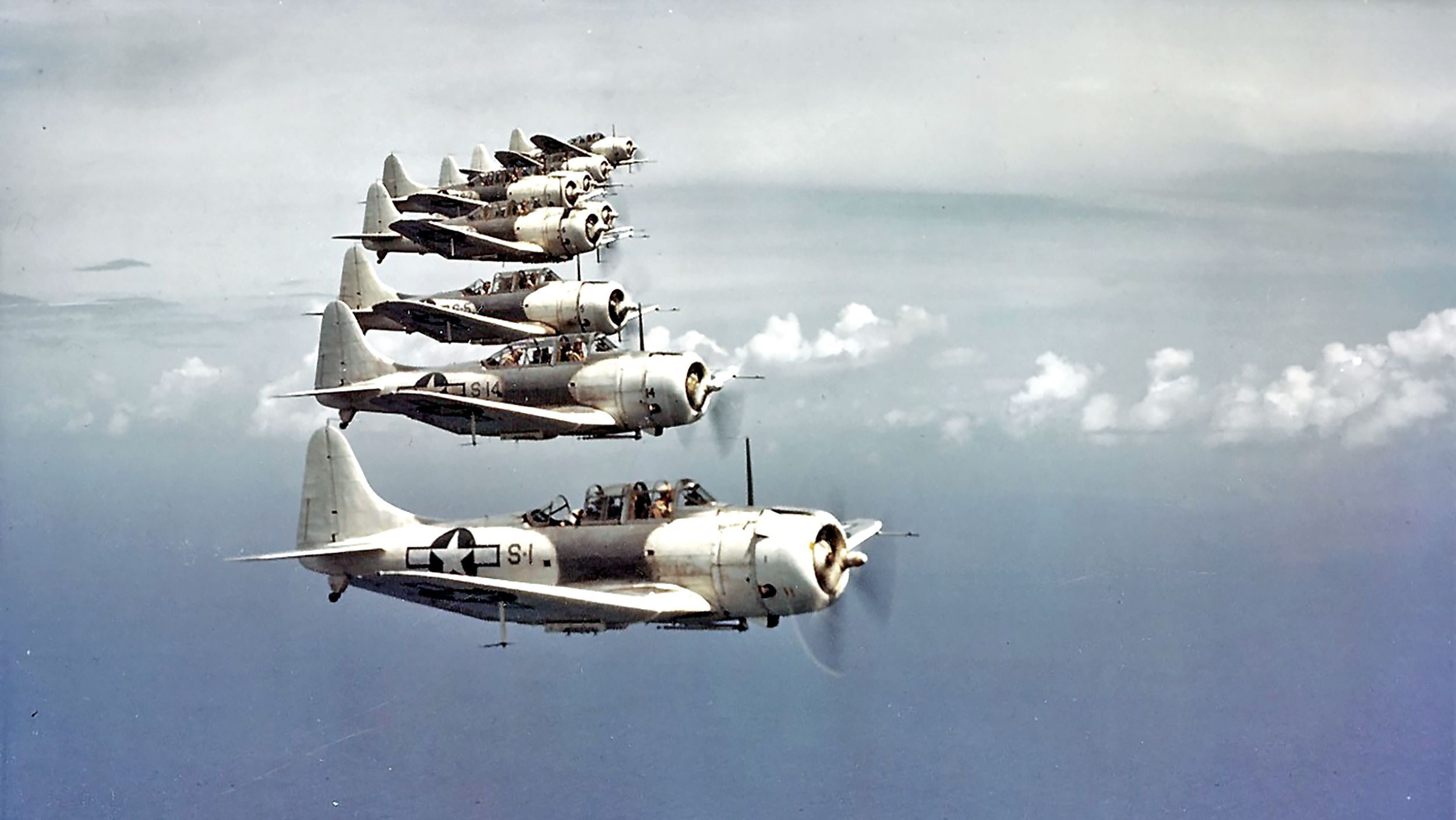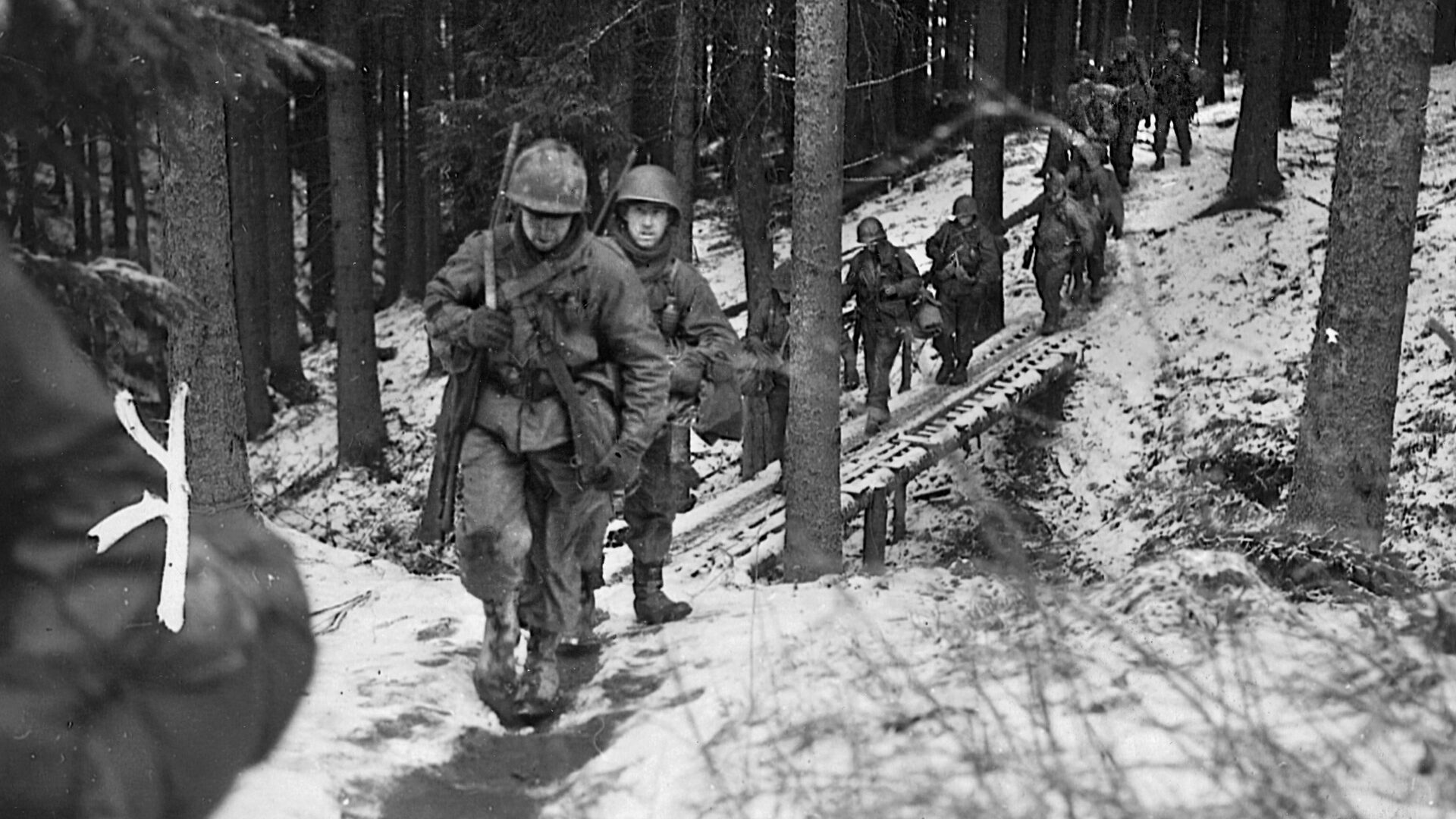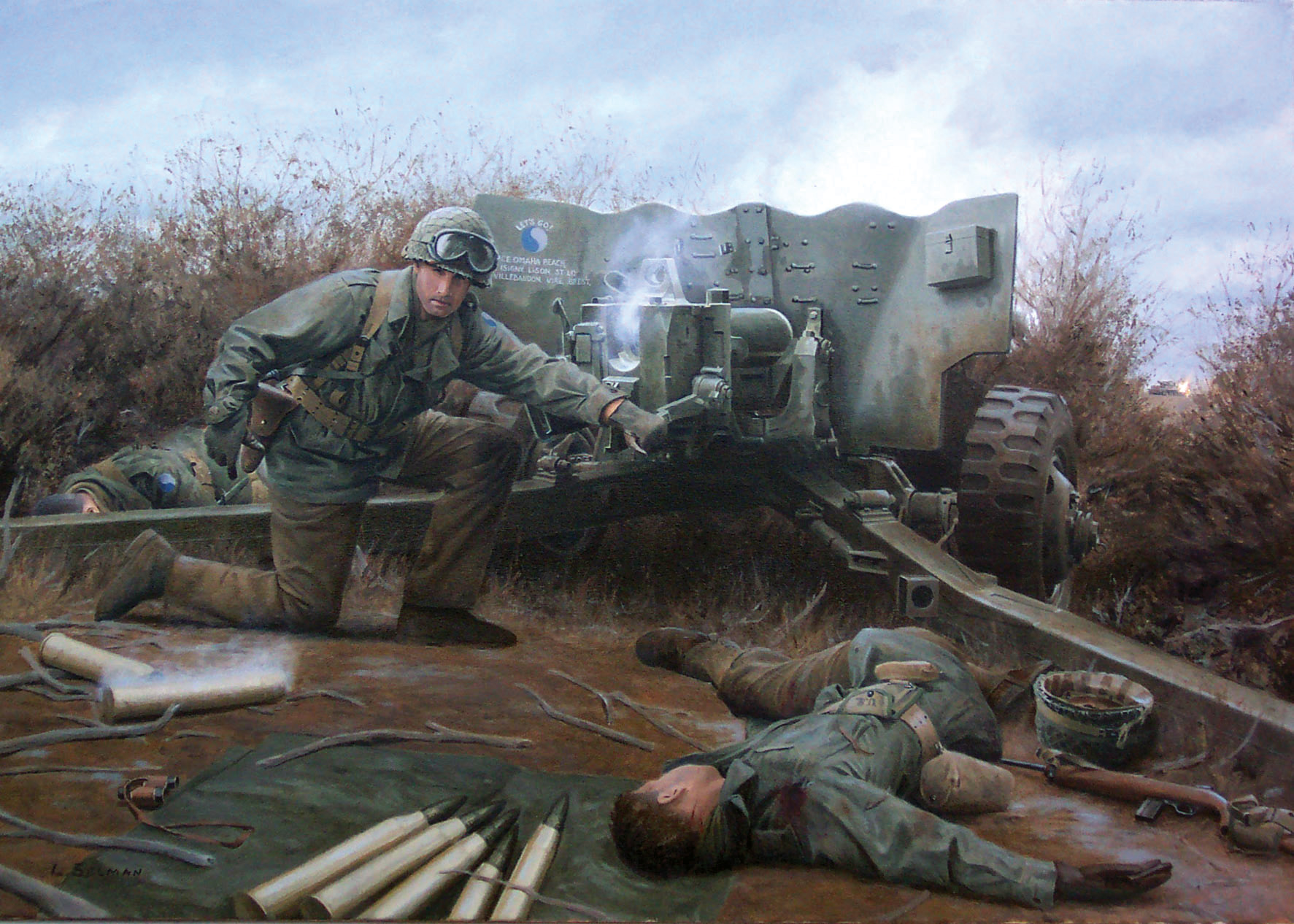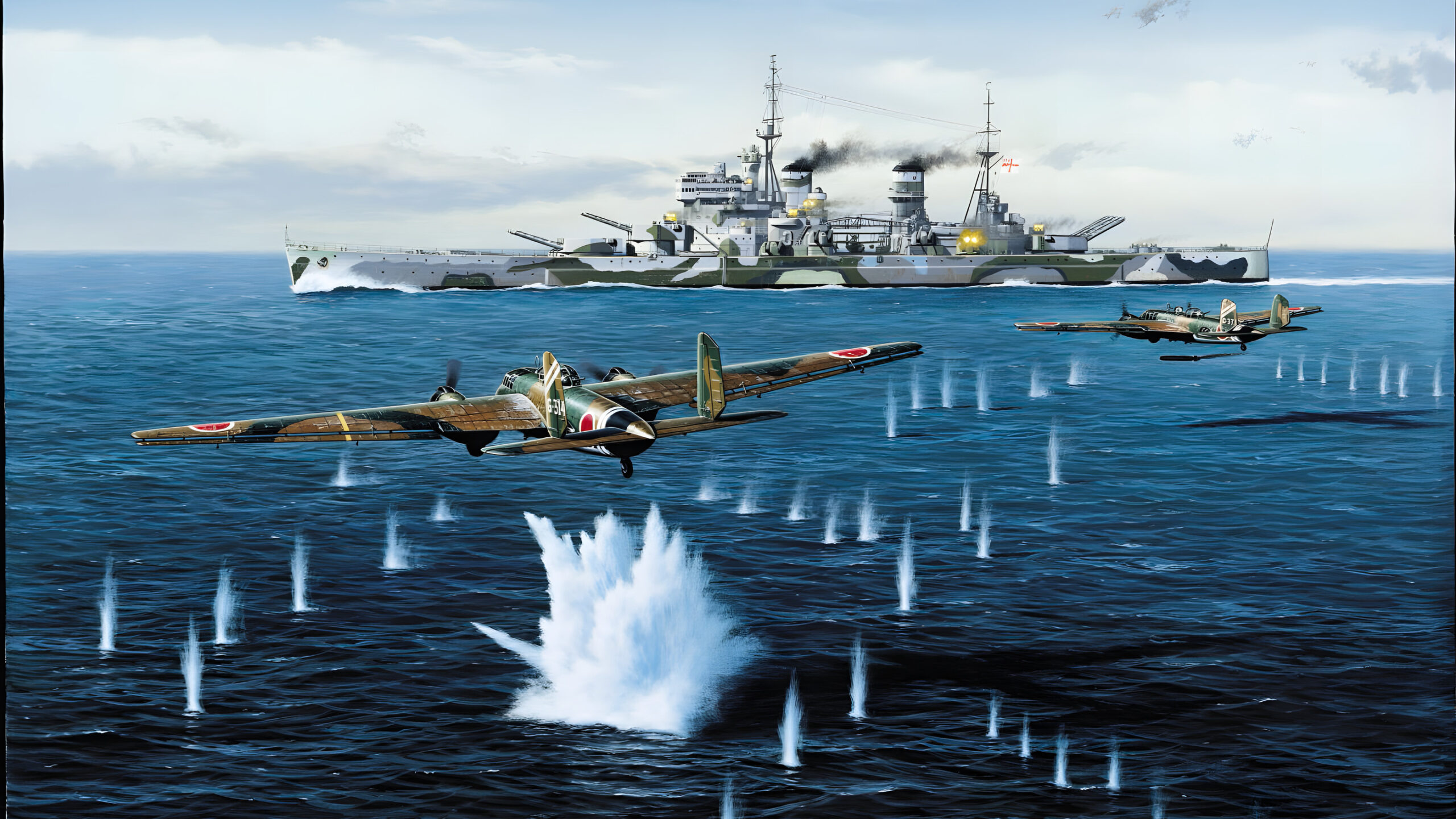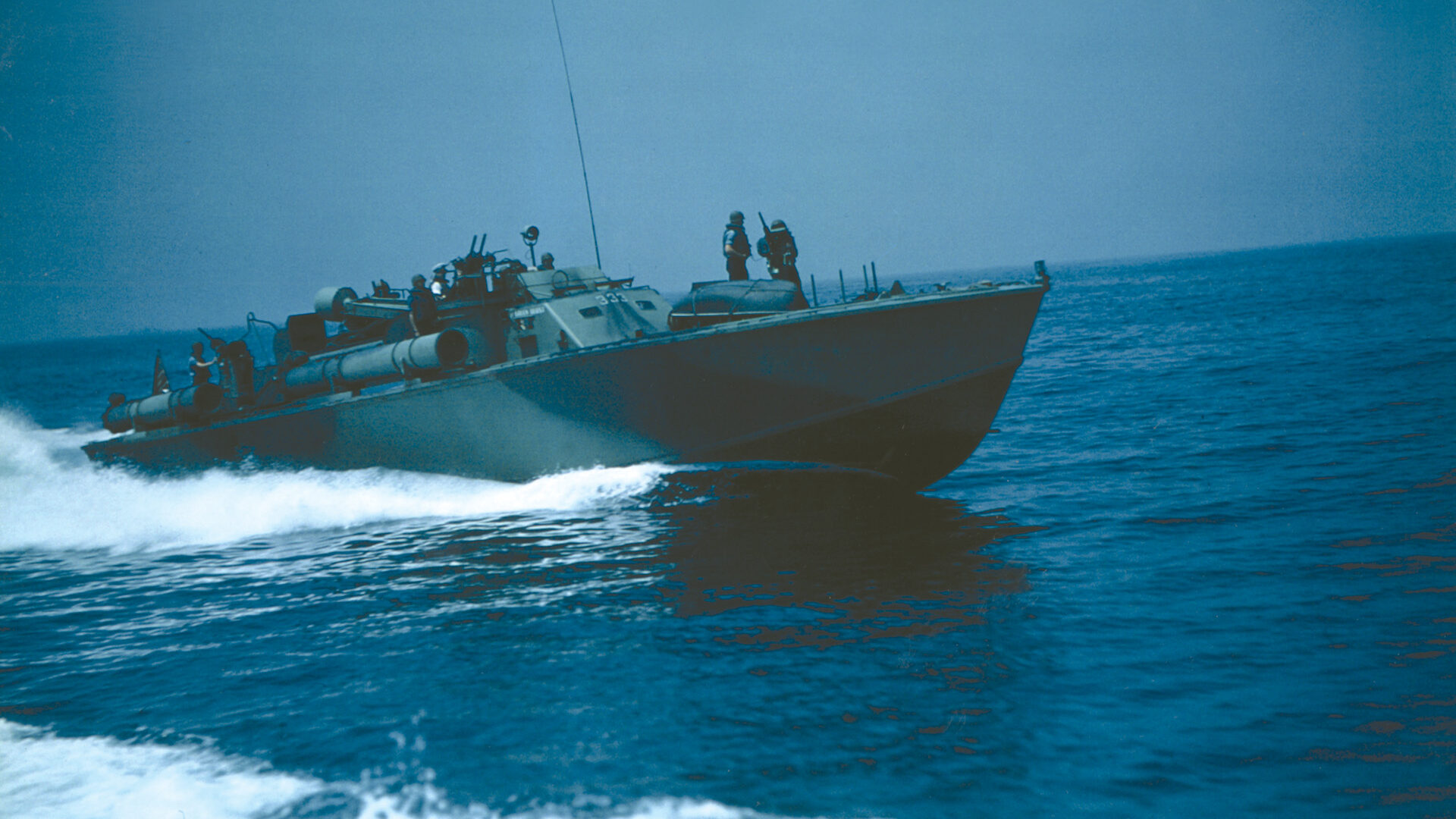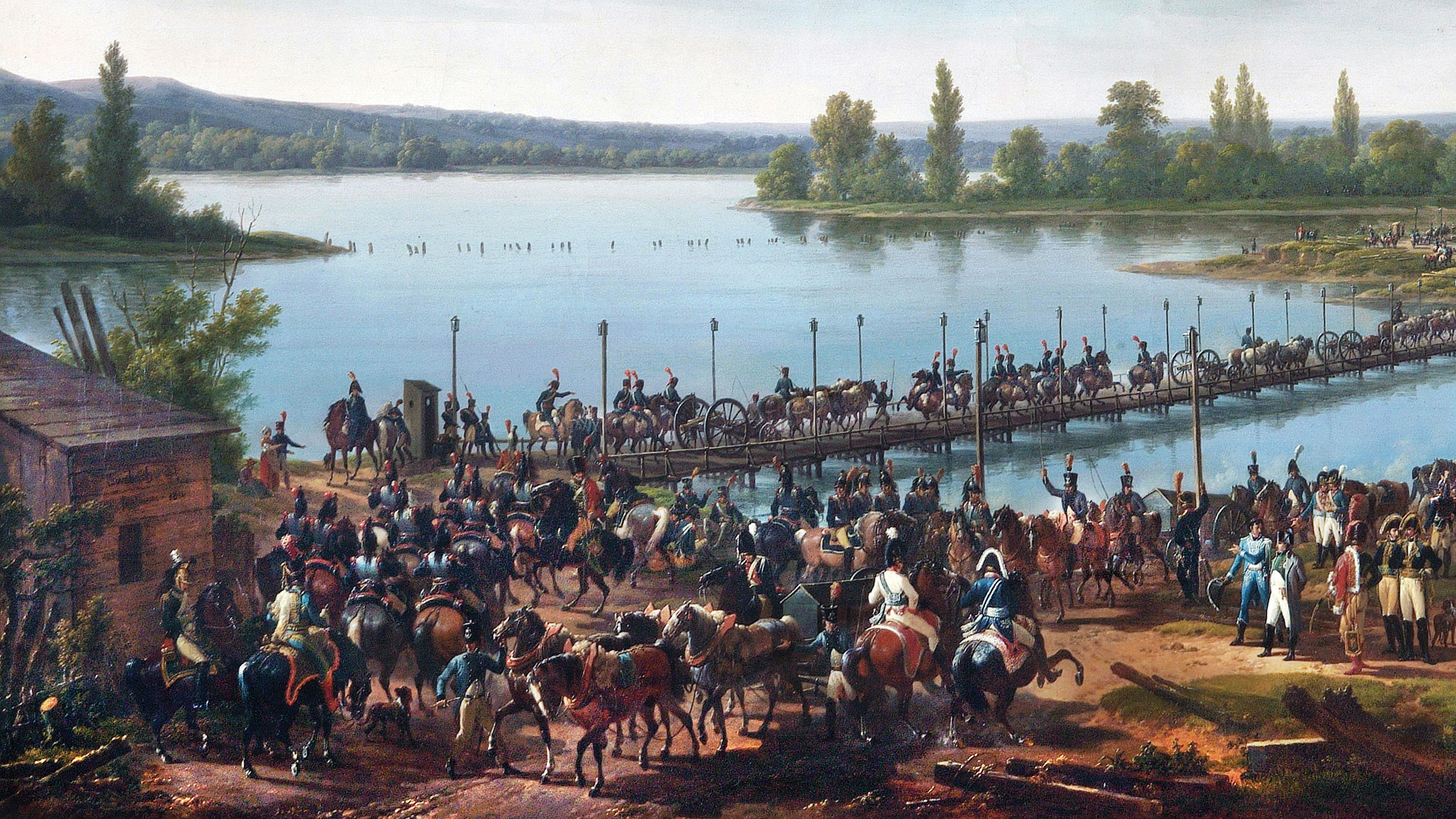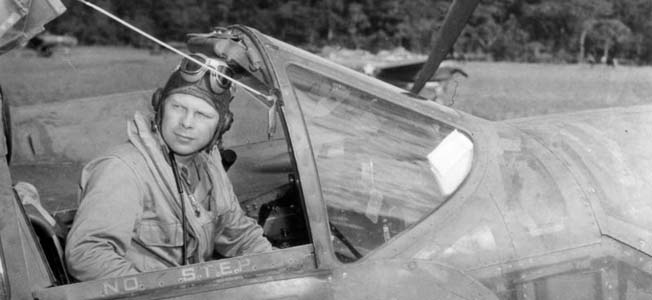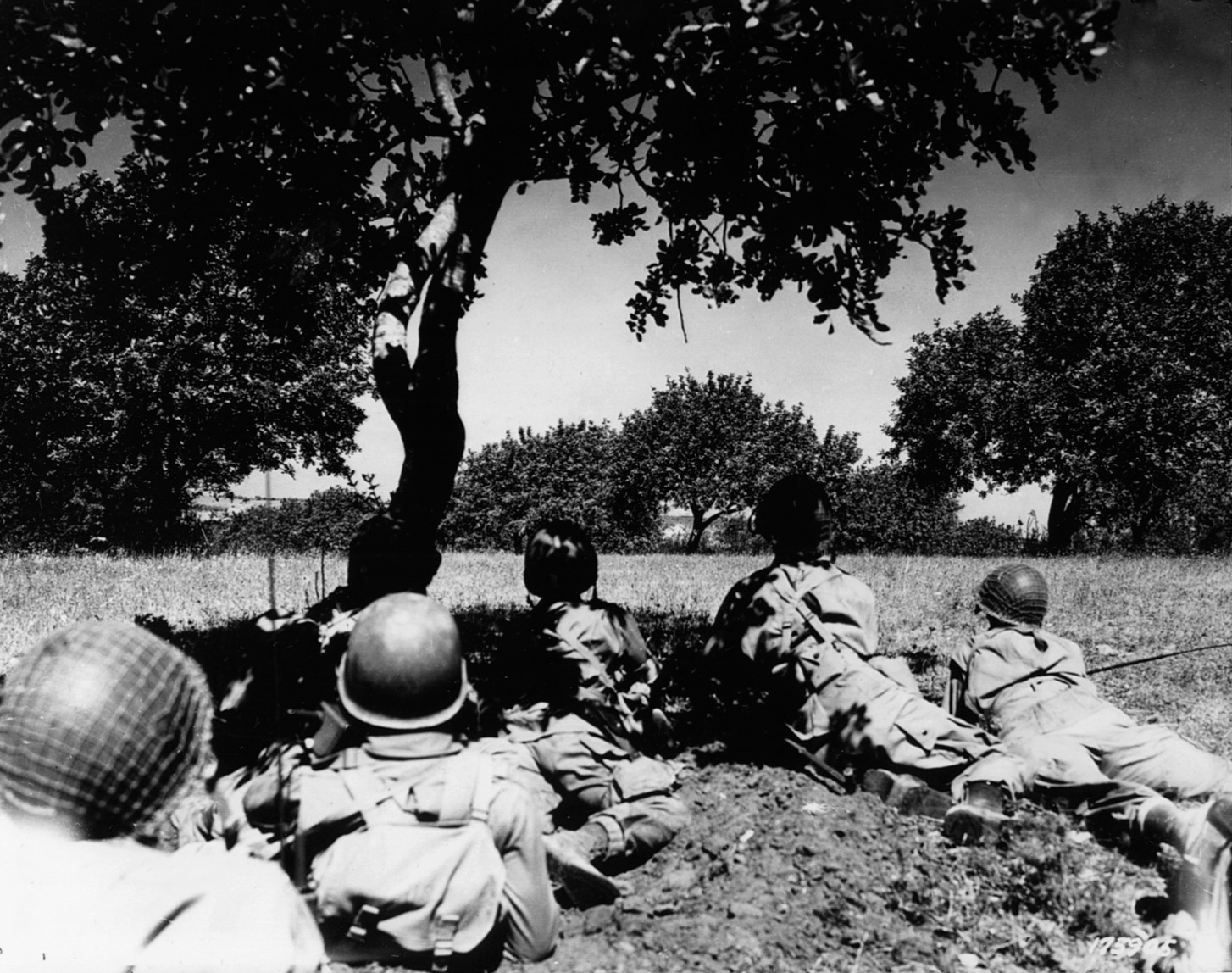By Frank Johnson
By April 1941, just over a year and a half into World War II, Nazi Germany was the master of Europe.
All that stood in its way was Great Britain and her far-flung empire. The tiny island nation stood defiant, but was perilously vulnerable after a series of defeats in northern France, Norway, the Far East, Greece, and Crete. With time and effort, Britain could summon imperial reserves, but she had no means of meeting the powerful German Army in battle.
Nazi dictator Adolf Hitler had always admired the British Empire and still believed that he could bring it to the peace table. He dreamed of conquering Europe while the British Empire controlled the rest of the world. Hitler suspected that Britain was fighting on because she looked to the Soviet Union for eventual support.
So, the German leader calculated that he could isolate Britain with a rapid war of movement in the East, toppling Marshal Josef Stalin’s regime and crushing Russian Bolshevism, which he loathed. An invasion of western Russia would also provide Germany with needed lebensraum (living space). This had been one of Hitler’s aims from his earliest preaching.
Less than a month after a humiliated France had surrendered to Germany in the early summer of 1940, and while he was considering an invasion of England, Hitler had ordered the drawing up of plans for an invasion of Russia in the spring of 1941. He told his military commanders of his intentions during a conference at his Berchtesgaden alpine retreat on July 31, 1940. The plan would involve 120 divisions thrusting through the fertile Ukraine to the River Dnieper while the rest advanced through the Baltic states and on to Moscow. Hitler estimated that the campaign would be completed in five months, before the onset of the harsh Russian winter.
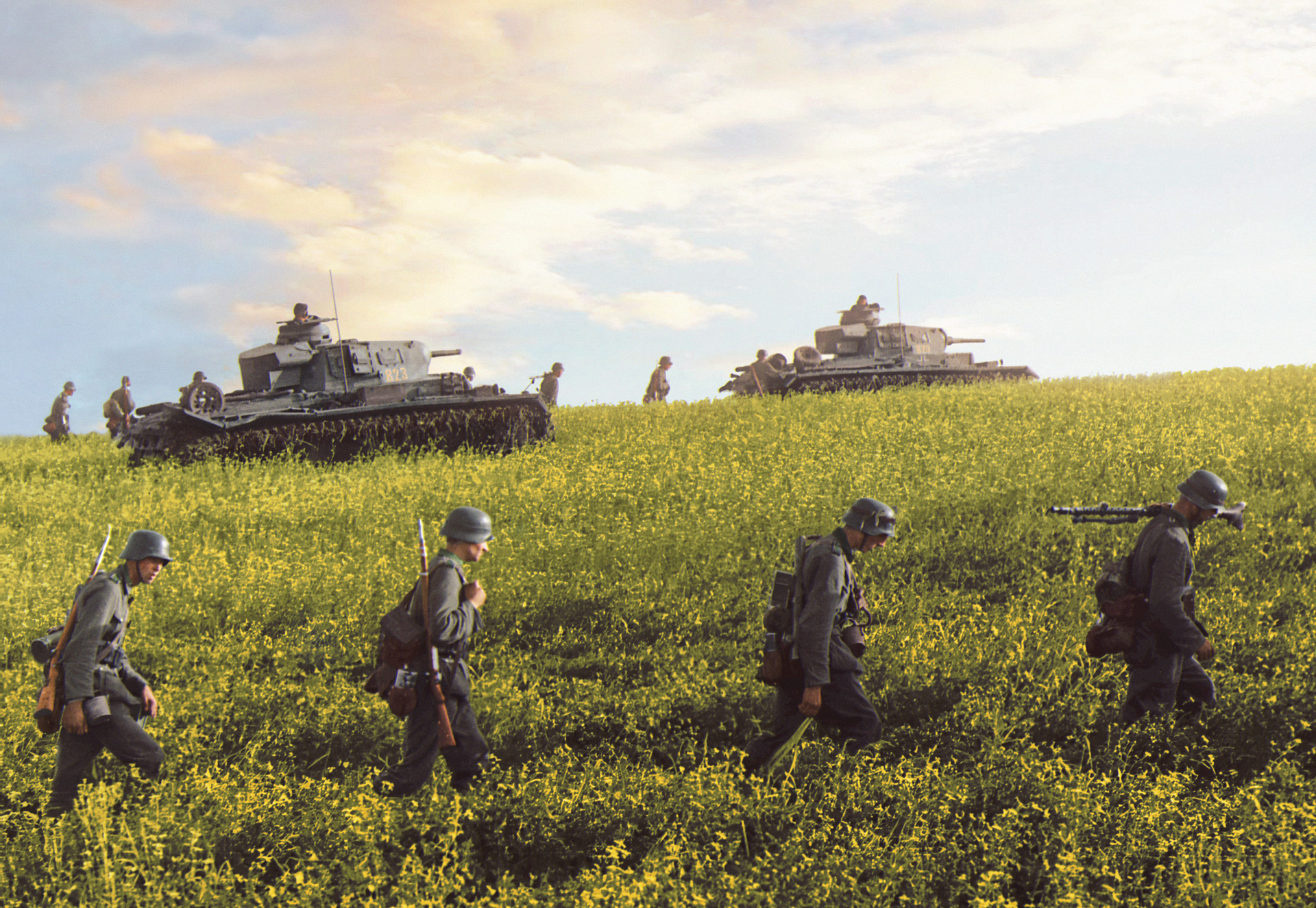
This, he said, would be the blitzkrieg to end all blitzkriegs. With Russia struck down, Britain virtually impotent, and isolationist America unwilling to enter the war, his promised “Thousand-Year Reich” was assured. On December 18, 1940, Directive No. 21 was issued authorizing Operation Barbarossa. A war in the East was never a question for Hitler and his generals, and the Fuehrer was committed to a venture that would prove to be his biggest blunder of the war and bring about the undoing of his army. Ignoring the bitter lesson of Napoleon’s army in Russia in 1812, the Nazi leader was to send the Wehrmacht to an even worse fate on the vast, frigid steppes of Russia. As British Field Marshal Bernard L. Montgomery observed, “One of the first rules of war is: don’t march on Moscow.”
But in 1940, the Nazi dictator had no doubt that his army, the most powerful in the world, would overcome any resistance the Russians might muster. In the 1920s, he had said, “This colossal empire in the east is ripe for dissolution.” In 1941, he said, “We have only to kick in the door, and the whole rotten structure will come crashing down.”
Hitler told General Franz Halder, chief of the General Staff, “When Barbarossa commences, the world will hold its breath and make no comment.” And the Fuehrer warned that it would be a brutal undertaking with no quarter given. In March 1941, he told his generals, “The war against Russia will be such that it cannot be conducted in a knightly fashion. This struggle is one of ideologies and racial differences, and will have to be conducted with unprecedented, unmerciful, and unrelenting harshness.”
Three months later, on the eve of the invasion, Hitler told the German High Command, “Your armies will shatter the Russian colossus. It will be a hard fight; the Asiatics are cruel and cunning, but you will meet them with a determination as hard and cold as ice. Only one people will come out of this alive—our people. You must make your troops put aside all their notions of restraint and humanity … This will be the last campaign of this war, and it will ensure the security of the Reich for many generations … We cannot refuse to give battle, and one day the world will thank us for having responded to the call of destiny.”
Delayed by a late spring thaw and German campaigns in the Balkans, Operation Barbarossa was eventually launched early on Sunday, June 22, 1941. At 2:00 that morning, a Russian train hauling grain chugged across the River Bug at Brest-Litovsk, on the German-Russian border. It was one of many that had taken the route during the past few months under Berlin-Moscow trade agreements. Seventy-five minutes later, more than 7,000 German field guns of all calibers started bombarding pinpointed targets, while overhead droned 1,000 Luftwaffe bombers on their way to pound Soviet airfields, military installations, and communications centers. A key objective was the destruction of the Red Air Force. Then, German armor and infantry surged eastward across the frontier on a 500-mile front. The onslaught would eventually cover a 2,000-mile front from the North Cape to the Black Sea.
The massive invasion comprised three powerful army groups with almost three and a half million men, 153 divisions, 3,600 tanks, 7,000 artillery pieces, 600,000 motorized vehicles, and 625,000 transport horses. Flying in support were 2,700 bombers, fighters, and dive bombers. Tuned in closely to the opening of the operation, Hitler was gleeful and supremely confident. “Before three months have passed,” he promised on that fateful day, “we shall witness a collapse in Russia the like of which has never been seen in history.”
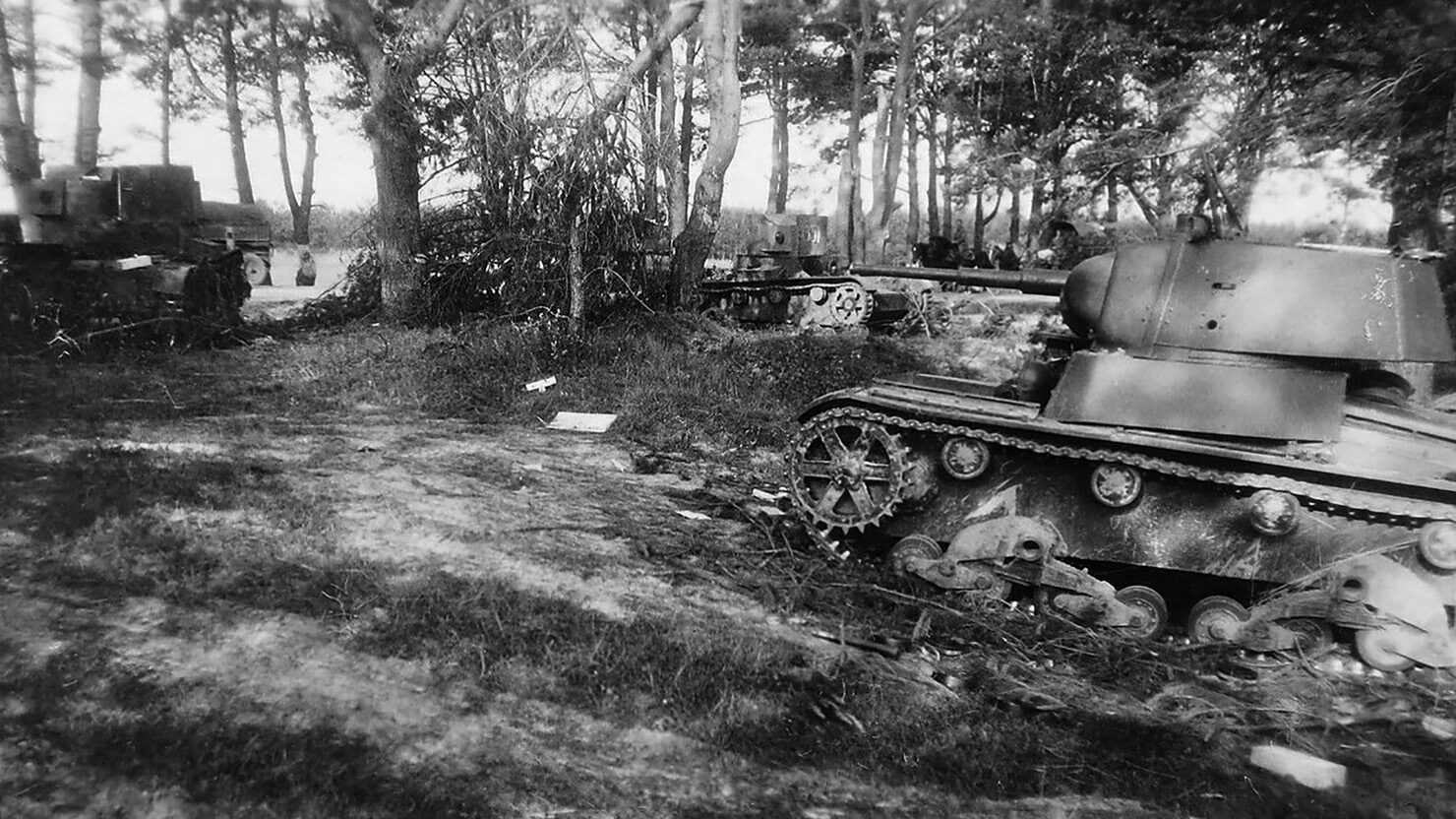
Under the overall command of Field Marshal Walter von Brauchitsch, the three German army groups aimed for precise objectives in Russia. General Ritter von Leeb’s Army Group North was to advance from East Prussia, through the Baltic States, and on to Leningrad. General Fedor von Bock’s Army Group Center was to besiege the border fortress at Brest-Litovsk, swing north of the Pripet Marshes, and head for Minsk, Smolensk, and ultimately Moscow. Field Marshal Gerd von Rundstedt’s Army Group South advanced from a starting line that arced from southern Poland along the Hungarian frontier and across Romania. Ahead of it lay the vast plains of southern Russia and the Ukraine.
The German armies included 14 Finnish, 14 Romanian, four Italian, and two Slovak divisions, plus a Spanish division and a Hungarian “rapid corps.” The Luftwaffe squadrons were supported by Finnish, Romanian, Italian, Hungarian, and Croatian fighters and bombers.
Facing the Germans in the western military districts were about 140 divisions and 40 brigades of Marshal Georgi Zhukov’s Red Army, totaling an estimated 2.9 million men, 10,000-15,000 tanks, some of which were obsolete, and 8,000 aircraft. Historian Alan Clark said, “What an appalling moment in time this is, the head-on crash of the two greatest armies, the two most absolute systems, in the world. No battle in history compares with it…. In terms of numbers of men, weight of ammunition, length of front, the desperate crescendo of fighting, there will never be another day like the 22nd June 1941.”
The Moscow high command was surprised by the scale of the Nazi assault, and, despite repeated warnings of Hitler’s intentions by agents and British Prime Minister Winston Churchill, Stalin was unable to grasp what was now happening. He had assumed that the rumors of war were just German saber-rattling.
The Soviet Union had been preparing for war, expanding the Red Army and producing such innovative weapons as the deadly Katyusha rocket launcher and the 26-ton T-34 medium tank, arguably the best tank of World War II. But Stalin had been ready to make big concessions in 1941, expecting a new reconciliation of interests with Hitler, and was not ready for war.
When the enemy juggernaut burst across his borders, the wily, brutal Marshal Stalin refused to sanction retaliation. He was in a state of shock—almost a complete mental collapse—for several days before pulling himself together. “Everything which Lenin created we have lost forever!” he groaned to aides. After recovering, he operated cautiously in the first month of the war.
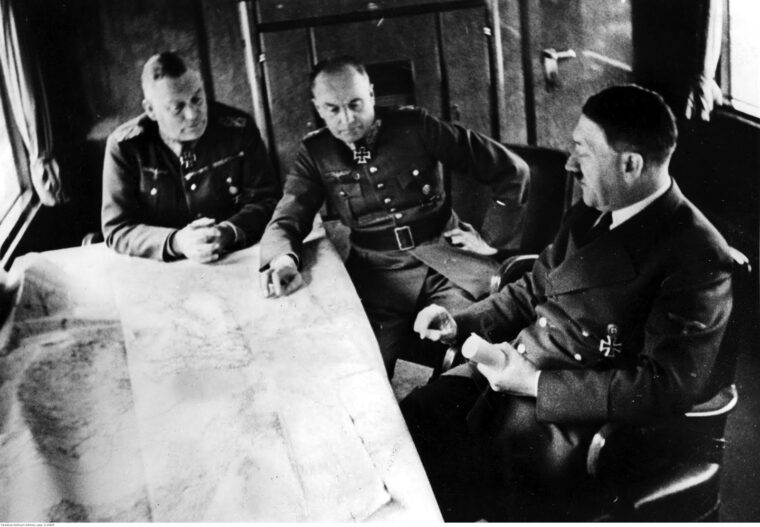
The specified aim of the German armies was to kill Russians rather than conquer cities. Hitler and his generals had agreed that the Soviet forces had to be trapped and beaten in western Russia, within 250 miles of the border. Their concern was that the Red Army might fall back deep into the Russian interior, drawing the Germans into a battle of attrition on the edge of Asia.
Meanwhile, as the Luftwaffe achieved aerial supremacy within the first few days, great German formations of panzers, artillery, and infantry steamrolled relentlessly into western Russia in blitzkrieg fashion. The iron spearheads knifed through lightly defended frontier positions, and there seemed to be no stopping them. Bridges across the Bug and other rivers and streams were seized by surprise, and sleepy Russian guards were machine-gunned as they scrambled for their weapons. Where there were no bridges, German shock troops paddled silently across in rubber dinghies or rode powered assault boats before the Russians could open fire.
The Soviet defenders fought bravely but suffered heavy defeats. On the road to Minsk and Smolensk, panzers of Army Group Center contemptuously blasted aside Russian armored cars and antitank guns. Rundstedt’s forces made good though less easy headway, while, on their southern flank, the Germans suffered heavy casualties at the hands of Soviet infantrymen. On the far distant front of Army Group North, where the Germans pushed into Soviet-occupied Lithuania, they were halted for a time by determined Mongolian troops.
On this northern front, where the brilliant General Erich von Manstein’s Panzer Corps delivered its first devastating punch, the enemy spearhead thrust 40 miles deep into Russian territory in 34 hours. Manstein, who believed that Operation Barbarossa could only succeed if the main Soviet military strength was destroyed in the first few weeks, urged his tank groups on without respite.
But the Soviets fought back with desperate valor. They held a trump card on which the Germans had not reckoned. As the massed panzers rumbled toward distant Daugava, their left flank was suddenly menaced by monstrous 43-ton KV-1 and 52-ton KV-2 tanks of the crack 3rd Soviet Armored Corps. A furious two-day battle ensued, and the Germans were able to prevail only after calling on support from high-velocity 88mm flak guns.
The German advances were generally so rapid that towns and villages were overrun before the hapless inhabitants knew that a war was in progress.
Bock’s Army Group Center advanced 400 miles and captured the whole of Belorussia in three weeks. The Soviet armies lost almost 5,000 tanks, almost 10,000 field guns, and 1,700 planes, and the enemy seizures of Bialystok and Minsk were each reminiscent of the German victory over the French Army and the British Expeditionary Force in May 1940. In Russia, the invaders sought to destroy the Red Army west of the Dnieper and Dvina Rivers, preventing it from escaping into the hinterland, and to capture Smolensk, the land bridge to the Soviet capital.
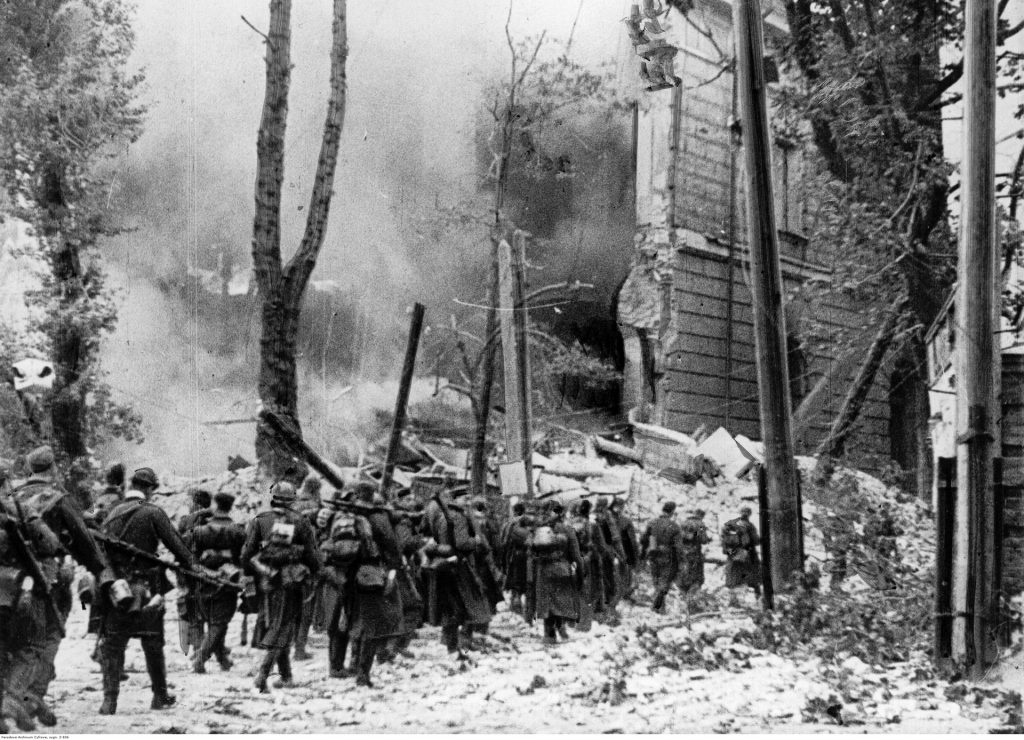
All went well, though the great distances involved and the minimal Russian infrastructure soon hampered the German timetable because the panzer divisions had to halt and wait for the slow-moving infantry and vital supplies. In many areas, the Germans faced no opposition; in others, Soviet units large and small fought desperately until overwhelmed. The city of Smolensk on the left bank of the upper Dnieper River held out for 63 days.
The Russians were fighting back wherever they could and whenever they could. While the German spearheads made spectacular progress toward Leningrad and Moscow, the going was harder on the southern front. The opposition was stiffer there, where four Soviet armies held strongly defended positions and compelled the invaders to fight bitterly all the way at heavy cost. Again, formations of Soviet tanks, including T-34s, chewed at the panzers, and again the Germans had to bring up their 88mm guns to extricate themselves. But the planned encirclement and destruction of the Russian force had been lost.
While the Soviets became better organized and increasingly ruthless, the German leadership was nevertheless confident and the morale of its troops high. Eleven days after the invasion began, General Halder noted in his diary, “I am therefore not exaggerating when I say that the campaign against Russia was won in 14 days.” But his assurance would prove premature. The battles raged on into the summer of 1941, and the Wehrmacht had to ward off vigorous Soviet counterattacks.
Bock in the center executed a giant pincer movement which converged on Minsk early in July, and 300,000 prisoners were taken. A week later came the battle of Smolensk, which raged for three weeks and brought 300,000 more prisoners. But Bock’s armies had suffered such losses that they had to refit and regroup.
In August, Hitler and his stunted propaganda minister, Josef Goebbels, admitted that they had “obviously underestimated completely Soviet striking power and, above all, the equipment of the Soviet Union.” They were forced to realize that Stalin’s increasingly efficient regime had succeeded in creating an untouchable eastern industrial base which enabled his armies to make good their heavy materiel losses in the battles of encirclement.
Despite continuing severe losses of manpower, materiel, and terrain, the Red Army was defending stubbornly and with mounting skill. It was able to prevent a rapid German conquest of Leningrad, Moscow, and the industrial region in the Donets Basin. Following an appeal from Stalin, partisan groups were hampering German logistical lines in the hinterland. The Germans were also experiencing supply problems because they had failed to provide sufficient materiel and transport for lengthy operations. The Russians—soldiers and guerrillas alike—were upsetting the German timetable.
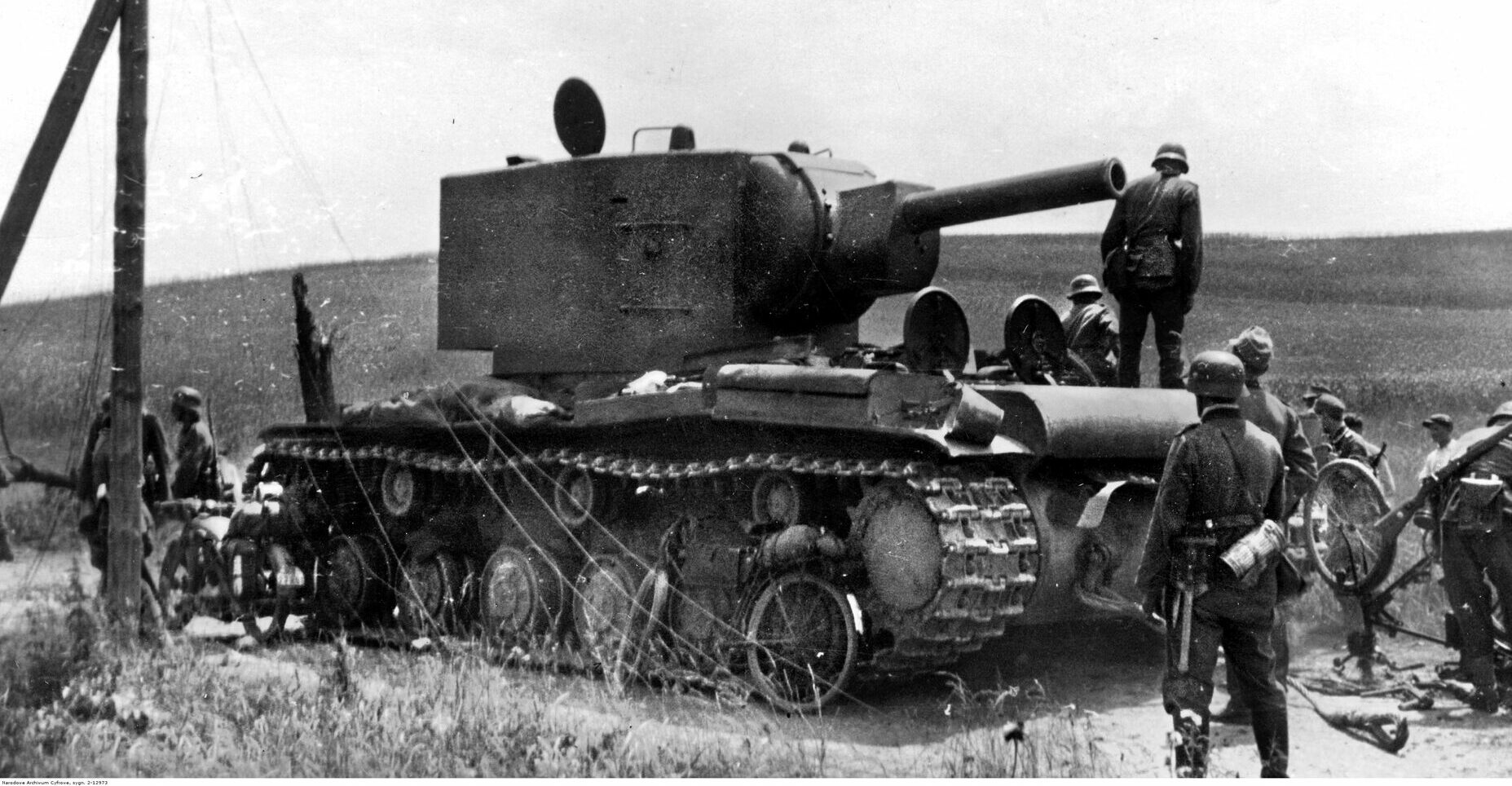
The Red Army had not cracked up after its initial setbacks and was contradicting Hitler’s prediction about the “whole rotten structure” collapsing. He was unaware of the Russians’ endurance and indifference to pain and death. When French writer Jean Bruller Vercours had suggested that Hitler’s legions would go through the country “like a knife into butter,” his Russian friend, Leon Motchane, retorted, “What an idea! You don’t know the Russians. Never mind if they like or dislike Stalin and his regime, that doesn’t count anymore. Holy Russia is attacked, and they’ll defend it. To the last man. And they’re invincible … Hitler has repeated Napoleon’s mistake. Even if he gets away with some early successes, he has flung himself into a bottomless pit. He’s doomed. Let’s drink to victory!”
Stalin, alarmed at the loss of several of his armies, had appointed himself commissar of defense and taken direct control of operations. He set up a general headquarters, the Stavka, and relied on dependable senior officers to take charge of crisis situations. The generalissimo was as brutal with the army as he had been with his people during the infamous purges of the 1930s.
Many of the generals who had faced the initial German blitzkrieg were relieved and executed. Those who remained were hard and ruthless, obeying orders no matter what the cost in casualties. Stalin ordered that the troops were to fight to the last man and that the families of those who surrendered would be deprived of all their rights. Soldiers who fled from the battlefield were quickly shot. The harsh measures worked, steeling the Soviet defenders in their determination to kill Germans.
The Russians—led by such tough generals as Semen Timoshenko, Semen Budenny, Konstantin Rokossovsky, Ivan Konev, Alexei Antonov, Rodion Malinovsky, and Vasily Chuikov—matched the highly disciplined German troops in merciless resolve, and seldom was such total disregard for the Geneva Conventions and the rules of war witnessed in World War II. From Leningrad all the way to Berlin, the Russo-German war was to be a fight to the death.
When he became aware of the Soviet Army’s growing strength, effectiveness, and will, the formerly confident General Halder was obliged to change his views. “Overall,” he said on August 11, “it is clearer and clearer that we have underestimated the Russian colossus, which had prepared itself for war with an utter lack of restraint which is characteristic of the totalitarian state. This is as true in the area of organization as it is of the economy, the area of transport and communications, but above all to pure military power. At the start of the war, we reckoned on some 200 enemy divisions. Now we have already counted 360. These divisions are definitely not armed and equipped in our sense, and tactically they are in many ways badly led. But they are there.”
While the Red Army suffered many defeats, it was still able to absorb enormous losses in men and materiel, to regroup, and to advance. General Hasso von Manteuffel, able commander of the German LVI Panzer Corps and later the 11th Army, reported, “The advance of a Russian army is something that Westerners can’t imagine. Behind the tank spearheads rolls on a vast horde, largely mounted on horses. The soldier carries a sack on his back, with dry crusts of bread and raw vegetables collected on the march from fields and villages. The horses eat the straw from the house roofs; they get little else. The Russians are accustomed to carry on for as long as three weeks in this primitive way, when advancing. You can’t stop them, like an ordinary army, by cutting their communications, for you rarely find any supply columns to strike.”
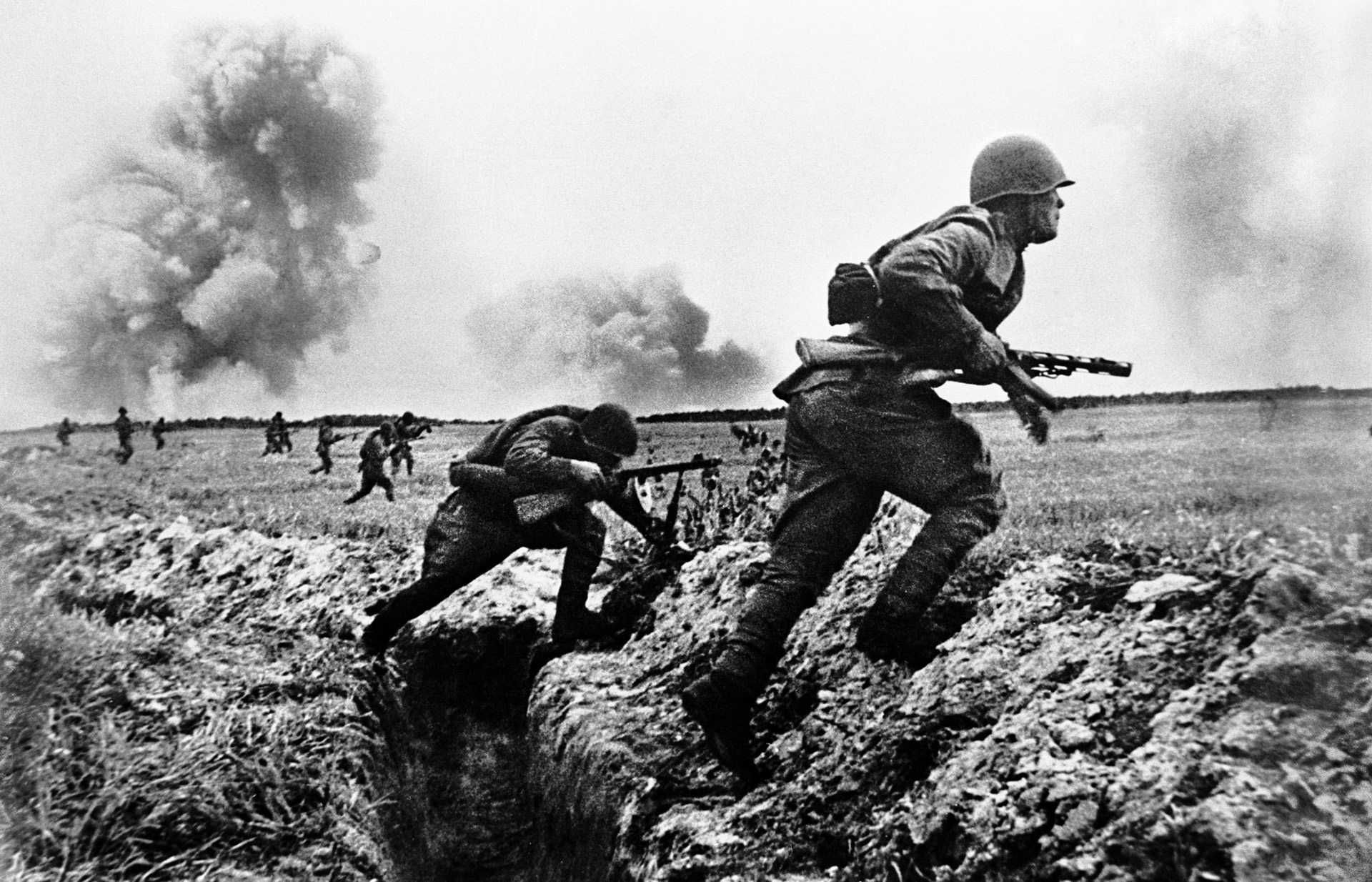
Hitler and his top advisers had naively expected their armies to be welcomed as liberators by the Russians, repressed as they were under Stalin’s chilling regime. But the Germans actually came as conquerors and made little or no attempt to win the hearts and minds of the people. They regarded the Slavic population as untermenschen (subhuman) and were determined to enslave the Slavic population and exterminate all Jews. Instead of liberating, the German troops and attached SS death squads slaughtered hundreds of thousands of soldiers, activists, political rebels, and Jews, left others to starve, and diverted captured resources to Germany. Therefore, from the beginning, the war on the Eastern Front was an ideological struggle, waged with a cruelty not witnessed in Europe since the Mongol scourges of the 13th and 14th centuries.
The fighting raged through the summer of 1941, and, despite increasing setbacks as the Red Army grew in both size and effectiveness, the German military professionalism excelled. In the first six months of the great campaign, the Wehrmacht achieved a dozen encirclements of Russian concentrations, ranking with the victories at Sedan in 1871 and the Ardennes in 1940. In the north, Leeb’s army pushed through Estonia in August but was repulsed before Leningrad in September. In the south, the armies of Bock and Rundstedt closed pincers at Lokvitsa, 120 miles east of Kiev, on September 14. The German bag was almost 700,000 prisoners, and Hitler called it “the greatest battle in the history of the world.”
But the Soviets would not give up the pressure, and the Germans’ problems mounted. In August, their advance had been slowed from 20 to five miles a day.
The German units were over-reaching their supply lines while a series of sharp Soviet counterattacks stalled their advance. The enemy forces were also continually hampered by the thousands of prisoners they had taken and for whom there was not sufficient food and shelter. It became obvious to Hitler’s generals that the campaign could not be maintained on three fronts. So, resources were diverted from Army Group Center and the drive toward Moscow to press attacks on Leningrad in the far north and Kiev and the Ukraine to the south, allowing Army Group South to approach the Soviet capital from behind.
Despite increasing Russian pressure, the Germans pushed on and managed to get enough supplies rushed forward to renew their drives. As a result, they were able to encircle Kiev in late September and Bryansk-Viazma in October. Almost eight Soviet armies totaling 1.2 million men were captured. The envelopment of Kiev was probably the greatest German feat of arms in any war.
Further advances and spectacular gains followed for the German Army. Manstein got as far as Sevastopol, Field Marshal Ewald von Kleist’s crack Panzer Group reached Rostov, Rundstedt’s army occupied the general Tagenrog-Kharkov-Kursk line, and Bock set off from Smolensk early in October and trapped another 600,000 Russians between Vyazma and Bryansk. Bock’s spearhead units would reach Klin, only 35 miles west of Moscow, on December 5.
Moscow seemed to lie open to a German advance, and Hitler was already busily drafting a plan for the destruction of the Soviet capital. But the weather intervened to further hobble German progress. This was what the Russians called “rasputitsa” (the time when roads dissolve). Heavy rains in October turned the dusty roads into impassable rivers of mud, bogging down tanks and supply columns. Already strained, the enemy logistical situation was now critical, while the weather favored the Soviets.
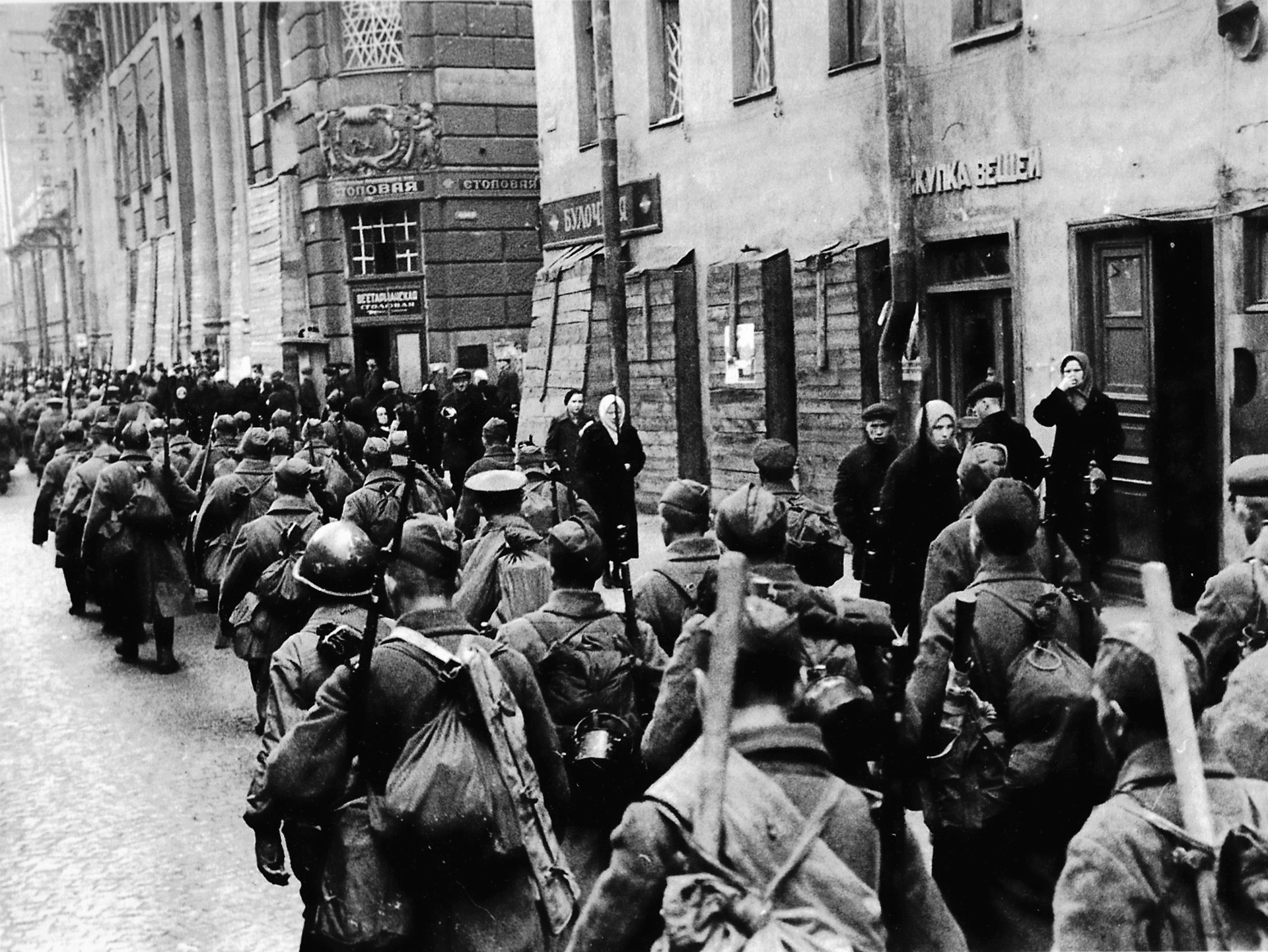
The Germans, meanwhile, had made great progress against the stubborn Soviet troops. Despite many unexpected setbacks and heavy losses in men and materiel, the invaders had bagged an estimated total of two million Russians. Reich Press Chief Otto Dietrich caused a sensation on October 8 when he announced that Soviet Russia was finished as a military power and that the war in the East was over.
Yet, none of the basic aims which Hitler had laid down for Barbarossa were achieved. Although his armies had scored huge successes on the northern and southern fronts, they had not captured Moscow, Leningrad, the rich Caucasian oilfields, or the Archangel railway. Above all, the Russian armies as a whole had not been destroyed nor prevented from withdrawing when necessary. The diversity of these objectives and the sheer width of front were proving beyond the reach of Operation Barbarossa.
Early in November, frosts solidified the muddy roads and enabled the German advance to continue. Kleist’s panzers approached Rostov, and the 11th Army under Manstein pushed into the Crimea, driving the Russians back on Sevastopol. German forces also overran the new industrial city of Kharkov and the Donbass region, the Soviet Union’s economic powerhouse. But Hitler’s armies were running out of supplies and replacements, and many of the panzer groups were now understrength. Yet the Germans, like the Russians, would not yield. Once again, they managed to push the Red Army back, and panzer units reached within 18 miles of Moscow. German officers could see the city’s gleaming spires through their field glasses.
The Red Army scored its first major successes in November. It secured the road over Lake Ladoga, the vital supply line to besieged Leningrad, and recaptured Rostov in the south. Meanwhile, the afflictions besetting the enemy armies became known to Stalin and his generals, who sensed that their foes were stretched to the breaking point with serious supply problems and lack of winter equipment. The German offensive came to a standstill by the end of November, and General Eduard Wagner, the Wehrmacht quartermaster-general, reported, “We are at the end of our personnel and materiel strength.”
The lull in the fighting enabled the Russians to bring in more armored divisions from the Manchurian frontier. Stalin, who had long since regained his confidence, ordered the traditional Moscow parade marking the anniversary of the Russian Revolution on November 7. Army tank, artillery, and infantry units marched through Red Square and straight out to the front lines. At that time, German reconnaissance patrols were approaching outlying stations of the Moscow subway system.
Launched by Bock on September 30, Operation Typhoon, the advance on Moscow, was underway. But the weather again brought problems for the Germans. Winter came, snow fell, and temperatures plummeted to a daily average of 12 degrees below zero, and sometimes 40 below. Guns jammed because their oils were not viscous in such weather, and fires had to be lighted under the oil pans of tanks each morning. Without adequate winter clothing, the soldiers froze. More than 100,000 cases of frostbite would be reported in December.
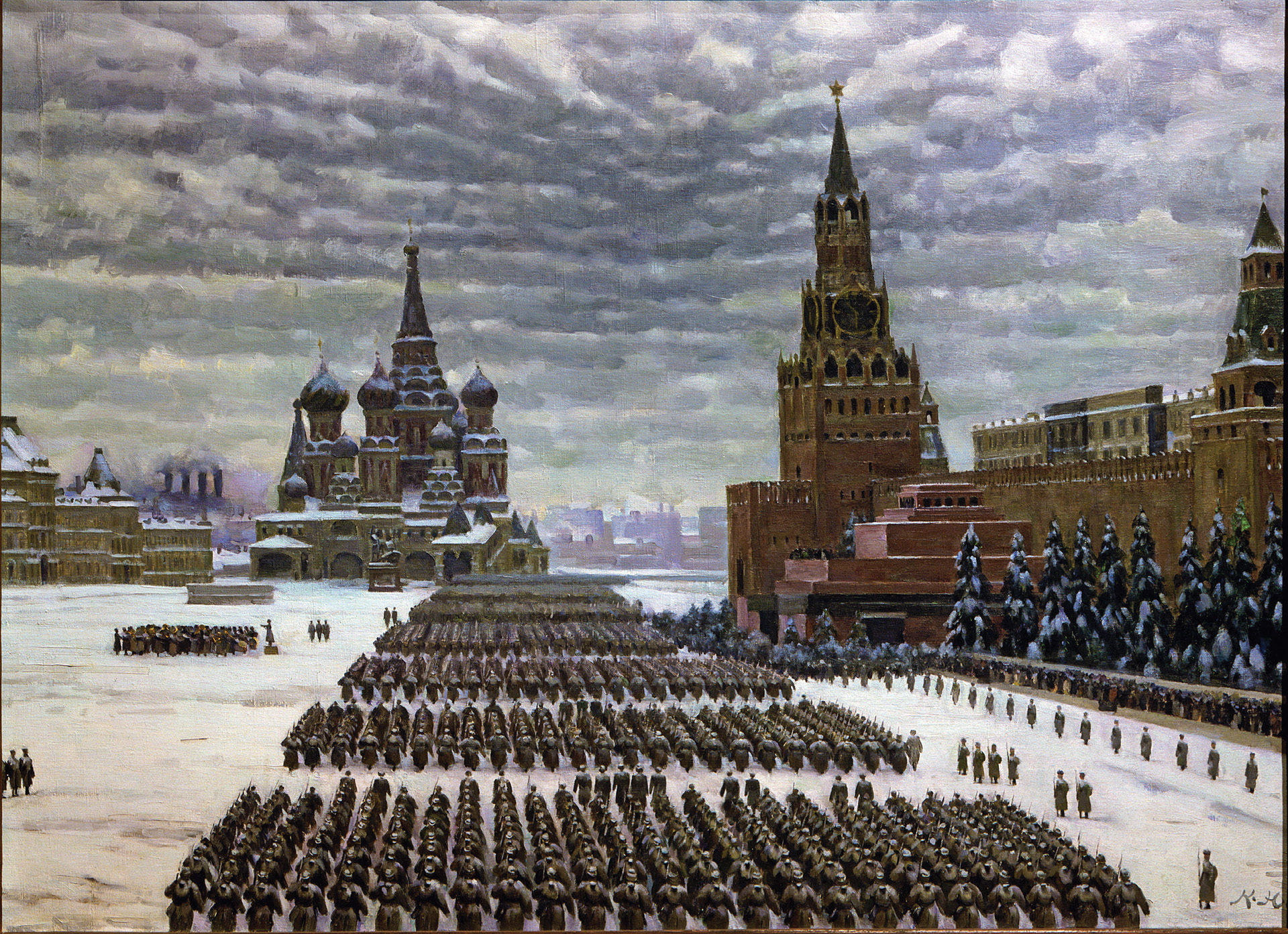
The Russians were well aware of the German threat to their capital. Unlike 1812, when Napoleon was allowed to enter Moscow, Stalin was determined to defend it. He had appointed his main troubleshooter, the highly regarded Marshal Zhukov, to organize the defense with his newly created West Front. Zhukov oversaw the transfer of troop reinforcements from elsewhere, the digging of antitank ditches west of the city, and the construction of a formidable series of defense lines by Moscow citizens, including thousands of women. Zhukov had about 80 divisions, many of them from Siberia, deployed to defend the city. Many Muscovites panicked and fled, and some government agencies were moved behind the Ural Mountains, but Stalin remained in the capital.
Despite the bitter cold and their critical supply problems, the disciplined Germans pushed on again toward Moscow, but the Soviets were waiting for them in great strength. On December 5-6, the Red Army launched a surprise counterattack north and south of the capital, breaking through weak enemy lines and creating large gaps in the front. It appeared that several German formations might become encircled, and they fell back. There was no hope of them drawing reserves from another theater of operations.
The Soviet troops kept up the attacks across a front of almost 600 miles for 34 days, and the Germans were forced back 50 to 150 miles. It was a great victory for the Soviet Army, a heartening moment for the hard-pressed Russian people, and one of the defining battles of World War II.
German commanders at the front demanded several times that their exhausted troops be withdrawn, and an angry Hitler refused. The fanatical Nazi leader ordered that soldiers should die where they stood, and not an inch of ground was to be surrendered. But on December 8, he agreed reluctantly to issue Directive No. 39, suspending Operation Typhoon for the duration of the winter. Army Group Center began pulling back to less exposed positions farther west, and Hitler’s anger increased. Several commanders-in-chief and generals were replaced or dismissed, and on December 19, Hitler took over Field Marshal Brauchitsch’s function as Army C-in-C. That day, the Fuehrer issued a general order: “Every man must fight where he stands. No falling back where there are no prepared positions in rear.”
But the dispirited, frostbitten troops were falling back, and Hitler was forced to realize that his Russian adventure had failed. And he now had wider concerns. The disaster before the gates of Moscow had been preceded by the December 7 Pearl Harbor attack and the entry of the United States into the war. When the Eastern Front lines stabilized at the end of the month, Germany faced three major enemies— the British Empire, Russia, and America. After many spectacular early successes, Hitler was now engaged in a total war he could not win.
By the end of December 1941, the Red Army had finally eliminated the German threat to Moscow, shattering the myth of Wehrmacht invincibility. Weakened by heavy personnel and materiel losses from which they never recovered, the German armies held defensive positions through the winter of 1941-42, while Hitler became increasingly scornful of the competence of his field commanders. The Red Army had also suffered heavily, and by the end of 1941, a total of 3.35 million Soviet troops had been taken prisoner. But the USSR, with a vast reservoir of manpower, did not collapse militarily as predicted, and the epic defense of Moscow stiffened Russian morale.
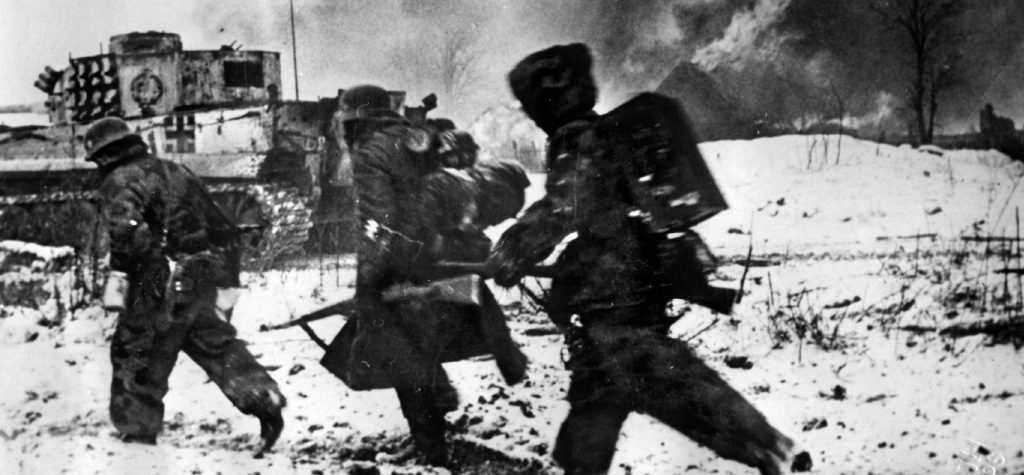
Hitler’s offensive against the city ended in a debacle because of the dogged and numerically superior Soviet troops, natural obstacles, “General Winter,” and the breakdown of the German supply network. None of the planned operational objectives was attained, and the blitzkrieg strategy was refuted.
Marshal Zhukov reported, “In planning a large, difficult strategical operation on the scale of Operation Typhoon, the German high command greatly underestimated the strength, the fighting spirit, and the potential of the Soviet Army in the battle for Moscow; on the other hand, it grossly overestimated the potential of its own troops, who broke through our defensive lines and were supposed to capture the capital of Moscow.”
The battle cost the Germans more than half a million men, 1,300 tanks, 2,500 artillery pieces, and more than 15,000 vehicles. By January 31, 1942, Operation Barbarossa had cost the German armies 918,000 men killed, wounded, captured, and missing.
After the Battle of Moscow, the German armies conducted a slow retreat in desperate conditions. Soviet attacks threatened to envelop them in a defeat as disastrous as that which overtook Napoleon’s Grand Army in 1812, but the Russians over-reached and the enemy forces were able to restore a semblance of order to the front. The spring thaw in March 1942 brought operations to a halt.
Then, after new offensives were mounted, fierce battles raged at Kalinin, Orel, the River Don, Krasnodar, Stalingrad, Kursk, Lvov, and elsewhere across the vast Eastern Front for almost three more years. Growing stronger and stronger, the Red Army relentlessly pushed the Germans back all the way to Warsaw, Budapest, East Prussia, Vienna, and Berlin.
In the end, Hitler’s misguided Operation Barbarossa had achieved nothing except to break the back of the German Army.
Author Frank Johnson is a first-time contributor. He resides in the United Kingdom.
